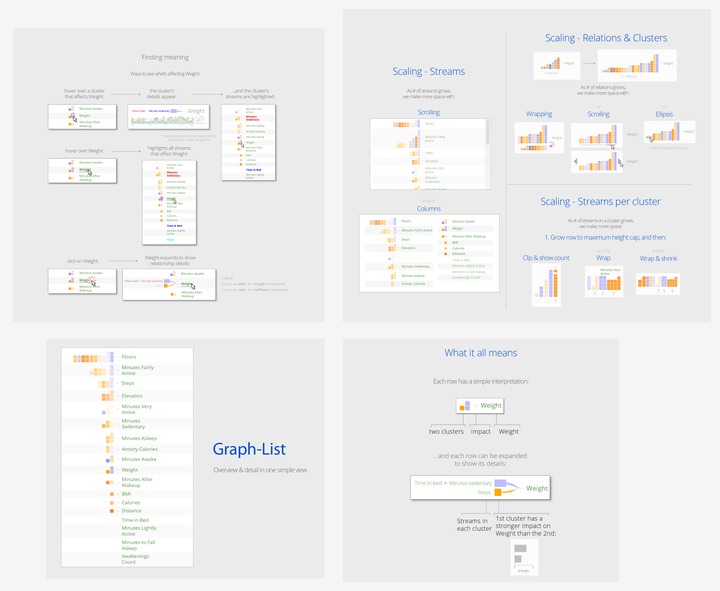 }
}
Client: Intel Labs
Intel Labs tapped us to collaborate on a greenfield AI project.
They were building a general-purpose AI system to automatically find & surface insights among multiple timeseries data streams: personal tracking data from wearables, system monitoring data, system logs, business metrics, global environmental measurements, etc.
The core inference engine used experimental algorithms based on the latest GAM, MARS, and Bayesian inference ML research. The system frontend had to be designed to clearly communicate the complex statistics coming from the inference engine, while giving users the power to explore what-if scenarios and work with multiple models and interpretations.
The Pixel Division was tasked with designing and building the system frontend, while also leading the engineering work needed to turn the core research code into shippable software.
Artificial Intelligence and Machine Learning are new frontiers for UX design. The UX paradigms aren’t settled, and even basic questions remain open.
This is the kind of challenge we ♥ at The Pixel Division. It’s the sort of open-ended design problem we’re experienced in solving.
To find the appropriate UX design for the frontend, we asked fundamental questions like:
How to represent degrees of inference certainty without implying causation?
and:
How to translate abstract statistics into a universally-understood visual language?
We researched, brainstormed, and prototyped dozens of UX designs – rapidly iterating to find the right patterns.
Once the UX was settled, we created a UI design and visual style to communicate the insights found by the machine learning models.
The UI was designed to scale to visualize thousands of insights, with high spatial density and a simple, readable style.
We used smooth animations and a custom layout engine to make it easy to see the effect of what-if scenarios and explorations of changes to the model’s parameters.
In parallel to the UX and UI design work, we also consulted with the engineering team.
One of The Pixel Division’s specialties is turning research-grade code into production-grade components through rigorous software engineering practices.
What began as an untested R&D prototype transformed into a tested, well-engineered API backend. We led the team’s engineering efforts by establishing guidelines, development processes, setting schedules, and educating the team on modern software engineering strategies. We turned a bundle of rough R scripts and a prototype Java backend into a production-ready server.
And we raised the team’s quality bar through a series of tactical ‘quality-ratcheting’ moves: unit & integration tests, an acceptance test suite, packaging & versioning discipline, code refactoring, API design, code hygiene, documentation, and more.
We were lucky to have the opportunity to collaborate with such an amazing team of researchers, PhDs, and machine learning domain experts.
This project yielded many insights into how to design for AI and ML, and how to engineer world-class AI-powered software.